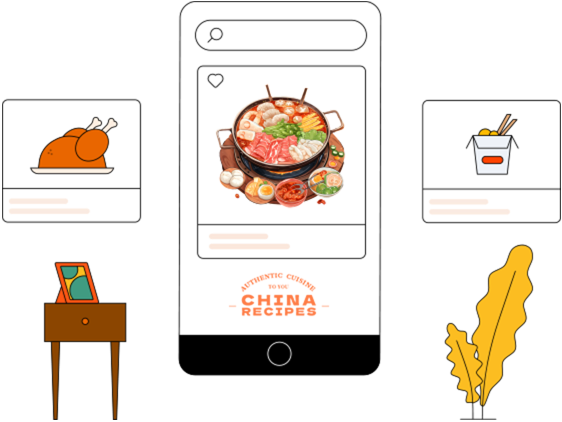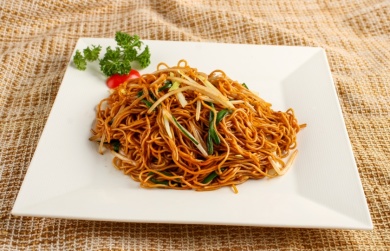Lo Mein vs Chow Mein: Which Is Better for Dinner?

Which tastes better: lo mein or fried noodles? After reading this article, you’ll know!
Lo Mein vs Chow Mein: Which Is Better?
Lo mein and fried noodles are both traditional Chinese dishes, and there’s no definitive answer as to which one is better—it depends on your personal taste preferences.
Lo Mein
Characteristics: Lo mein refers to boiled noodles mixed with sauce, vegetables, and proteins. The sauce is rich, and the noodles are soft.
Advantages: Lo mein is perfect for those who enjoy a delicate texture and soft noodles. It pairs well with a variety of meats and vegetables.
Fried Noodles
Characteristics: Fried noodles are typically made by stir-frying cooked noodles at high heat. The result is crispy with layers of flavor, and the sauce is lighter.
Advantages: Fried noodles are ideal for those who enjoy a crispy texture and simple seasoning, highlighting the natural flavor of the noodles.
Summary:
If you like rich sauce and soft noodles, lo mein is the better choice.
If you prefer crispy, fragrant noodles with a more textured flavor, fried noodles might be more to your taste.
Is Chow Mein or Lo Mein Skinny Noodles?
Neither fried noodles nor lo mein are strictly made with thin noodles.
While thin noodles are a common choice, you can use a variety of noodles such as dragon beard noodles, ramen, wide noodles, or round rice noodles. Thin noodles are often preferred because they have a soft texture and absorb sauce well. Whether in lo mein or fried noodles, thin noodles mix easily with the ingredients, making them ideal for both dishes.
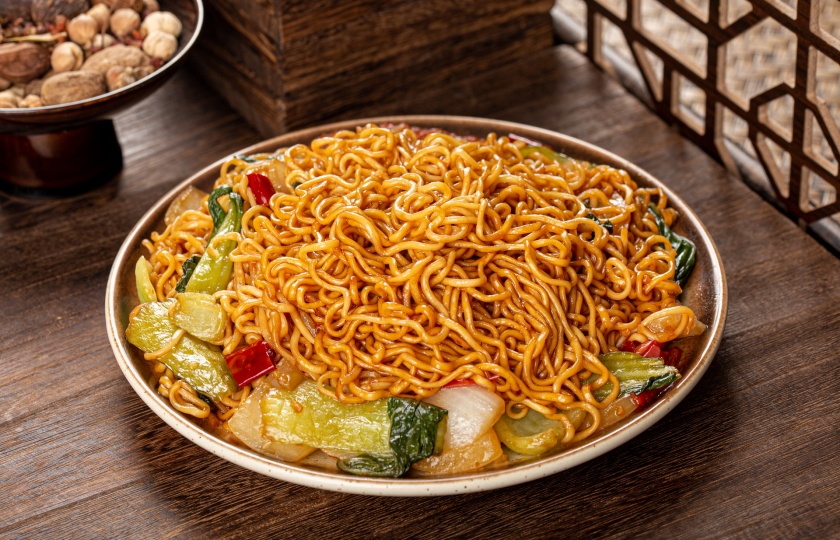
For example, in lo mein, thin noodles pair wonderfully with rich sauce, and in fried noodles, they quickly absorb the seasoning, creating a smooth and flavorful bite.
Why Does Chow Mein Taste So Good?
Fried noodles are delicious, and I can eat a lot of them! Here’s why they taste so good:
Fried noodles are cooked quickly at high heat, giving them a slightly crispy texture. This crispiness adds richness to the dish.
During frying, various ingredients like vegetables, meats, and seafood release their aromas, which blend together and enhance the flavor of the noodles.
The seasonings—soy sauce, oyster sauce, minced garlic, etc.—fully combine with the noodles, making the dish more flavorful and aromatic.
The high heat during frying slightly caramelizes the noodles and ingredients, especially on the edges, which releases an even richer fragrance, making the noodles taste more complex than boiled noodles.
What Is Chow Mein vs Lo Mein?
Cooking Method
Fried Noodles: After cooking the noodles, they are rinsed in cold water, drained, and stir-fried with ingredients at high heat. This method allows the noodles and vegetables to absorb the flavors, creating a crispy texture on the surface.
Lo Mein: The noodles are boiled, then immediately tossed with pre-made sauce or broth. There is no stir-frying involved.
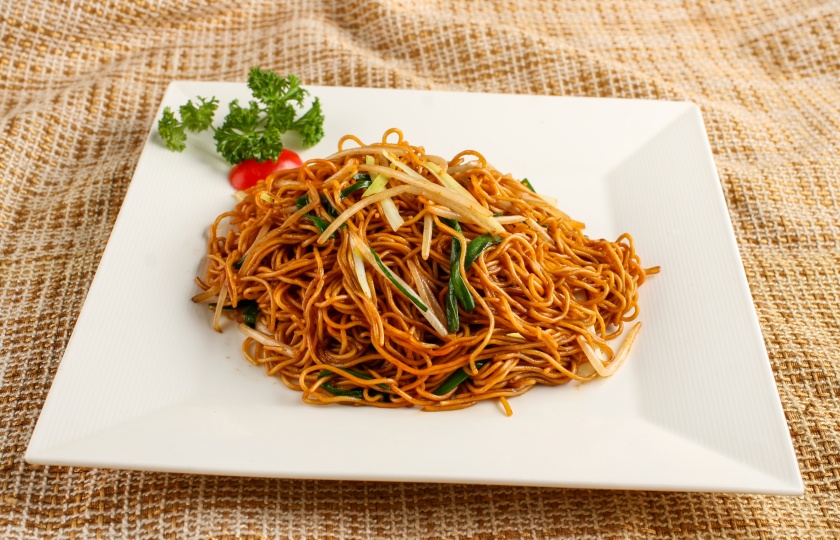
Texture
Fried Noodles: The texture is more complex, with the noodles having a chewy interior and a slightly crispy exterior, especially where they touch the pan.
Lo Mein: The texture is smooth, with the noodles absorbing the sauce, creating a soft and flavorful bite.
Flavor Profile
Fried Noodles: The flavor depends on the combination of vegetables, meats, and seasonings like soy sauce and oyster sauce. Fried noodles tend to have a stronger, more intense flavor.
Lo Mein: The flavor is mainly determined by the sauce, which could range from a light soy sauce base to a more robust broth, but the sauce generally takes center stage.
Appearance
Fried Noodles: The noodles appear slightly curled and are often darker in color, with an oily sheen from the stir-frying process.
Lo Mein: The noodles remain relatively straight and are uniformly coated with sauce. The dish is lighter in color compared to fried noodles, with a refreshing appearance.
Ingredient Combinations
Fried Noodles: A wide variety of ingredients can be added, such as pork, chicken, shrimp, ham, onions, peppers, and more.
Lo Mein: The focus is on ingredients that complement the sauce, such as cucumbers, carrots, or other vegetables to balance the richness of the sauce.
How Healthy Is Chinese Lo Mein?
Chinese lo mein can be a healthy dish.
Noodles: The noodles are made primarily from wheat flour, which is rich in carbohydrates, providing ample energy. They also contain proteins, vitamins, and minerals. During cooking, the starch on the noodles dissolves into the soup or sauce, aiding in digestion and absorption.
Health Benefits: The warm broth and soft noodles are gentle on the stomach, making lo mein a good choice for people with digestive issues. Additionally, the copper content in lo mein is beneficial for hair health.
However, the healthiness of lo mein depends on the ingredients. If you add vegetables, lean meats, or tofu, it’s a balanced meal. But if you use salty pickled vegetables or foods high in fats, it may not be as healthy.
Chow Mein Recipe
Ingredients:
Noodles: Thin or wide noodles, based on personal preference.
Vegetables: Bean sprouts, greens, onions, carrots, etc.
Meats: Pork, chicken, shrimp, ham, or whatever you prefer.
Seasonings: Soy sauce, dark soy sauce, oyster sauce, salt, sugar, cooking oil, scallions, minced garlic.
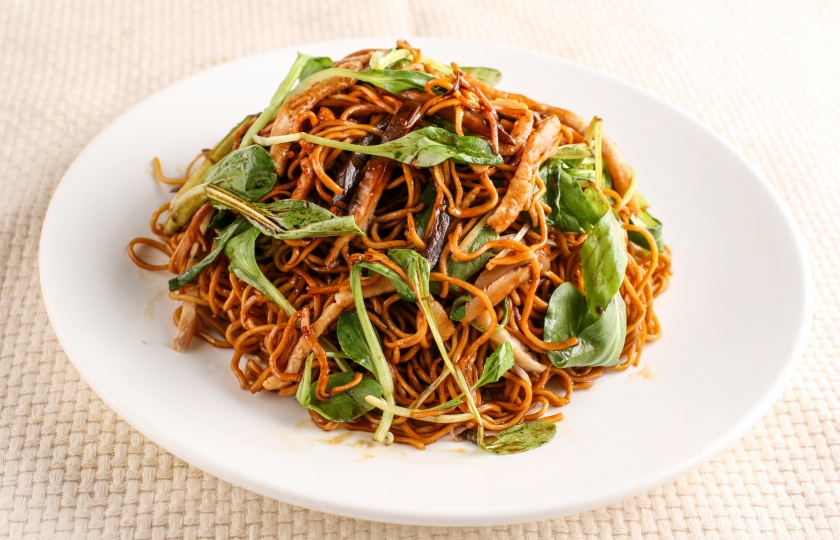
Steps:
Prepare the Noodles
Cook the noodles until 80% done, rinse them under cold water, drain, and mix with a little cooking oil to prevent sticking.
Prepare the Ingredients
Wash the bean sprouts, slice the onions, carrots, and greens. Slice the meat and marinate it with a little soy sauce, salt, and cornstarch for 10 minutes.
Stir-Frying
Heat oil in a pan, add garlic, and sauté until fragrant.
Add the marinated meat and stir-fry until it changes color, then remove and set aside.
In the same pan, add the onions, carrots, bean sprouts, and stir-fry until softened.
Add the noodles and stir in soy sauce, dark soy sauce (for color), oyster sauce, salt, and sugar. Stir-fry until evenly mixed.
Add the cooked meat and greens, and stir-fry for another 1-2 minutes.
Serving
Garnish with chopped scallions and serve hot.





